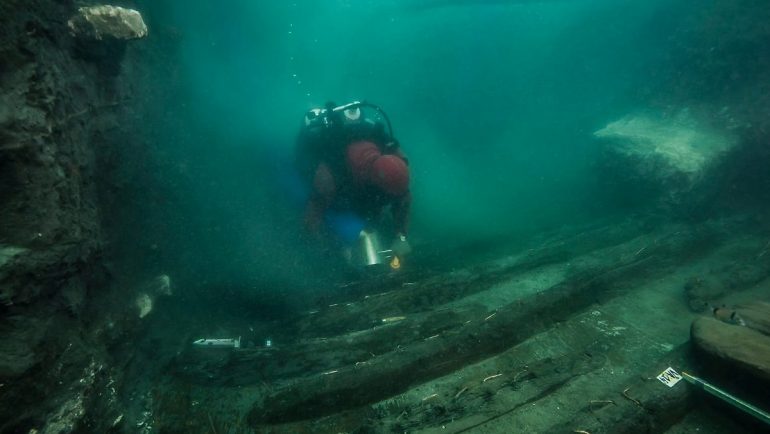Monday, July 19, 2021
In a submerged city in Egypt
2000 year old warship parts found
In Egypt’s Mediterranean, archaeologists make a particularly rare find: they’ve been excavating parts of a galley from the time of the pharaohs. It sank 2000 years ago – and with it was the most important port city for rulers in ancient Egypt. The remains remain off the coast of the country to this day.
Archaeologists have discovered parts of a military ship more than 2000 years old during excavations in the sunken ancient city of Heraklion in Egypt. It was a 25 meter long galley, equipped with oars and a large sail, proclaimed the Ministry of Antiquities in Cairo. Researchers discovered the ship during an underwater excavation off the Mediterranean coast near Alexandria.
In the 2nd century BC, the ship was struck by stone blocks from the nearby Amun Temple in a disaster and sank. Ships of this period are considered extremely rare. On the northern coast of Egypt lie the remains of the cities of Heraklion and Canopus. From Thonis-Heraklion – the Egyptian and Greek name of the city – at the mouth of the Nile, the entire maritime trade for Egypt was controlled before Alexander the Great built the city of Alexandria after him in AD 331.
Heraklion was an important source of income for the rulers of ancient Egypt due to its taxes and import duties. The city was also an important religious center. “Due to its geographical location, it was the most important trading port along the Greek seas under the Pharaoh’s rule and a center for observing foreign ships,” writes the European Institute of Underwater Archeology (IEASM), which led the excavations. The high activity of the old port is also demonstrated by more than 700 ancient moorings and 16 wrecks dating from the 6th to 2nd centuries BC, which researchers discovered in the area.
The ancient city of Heraklion lies about ten meters below the surface in Abu Kir Bay, east of present-day Alexandria. It probably sank because the ground became liquid and gave way as a result of the earthquake. French underwater archaeologist and IEASM founder Franck Godio has been researching the area for nearly 30 years.

Introvert. Proud beer specialist. Coffee geek. Typical thinker. Pop culture trailblazer. Music practitioner. Explorer.





